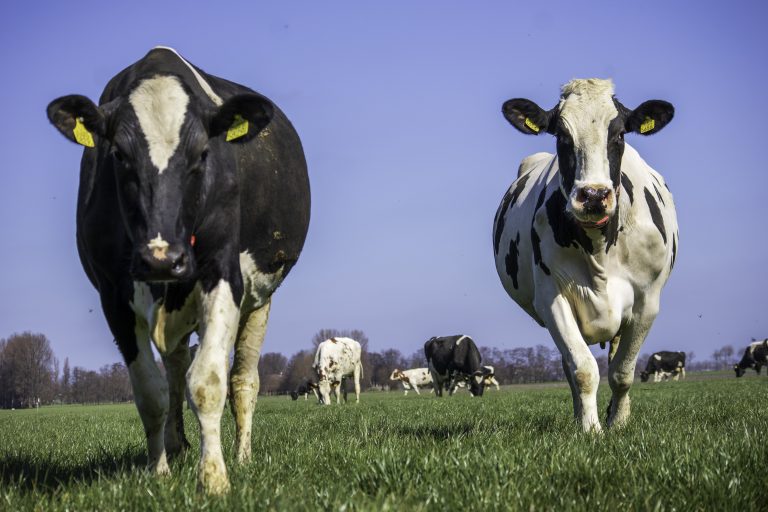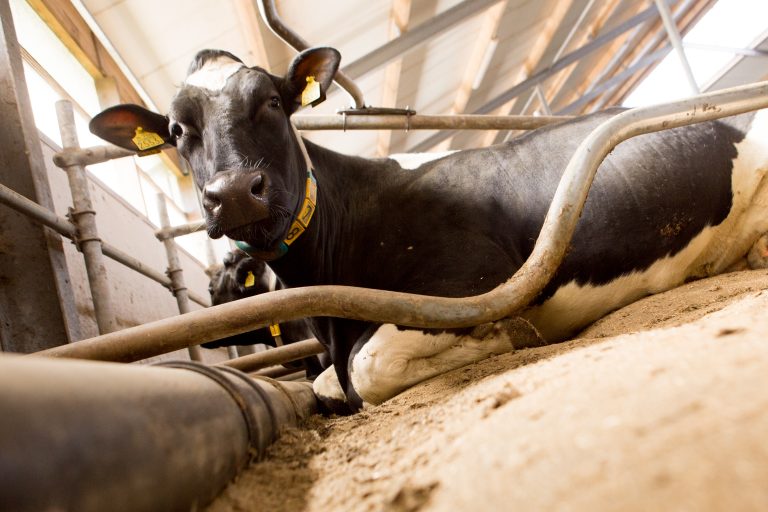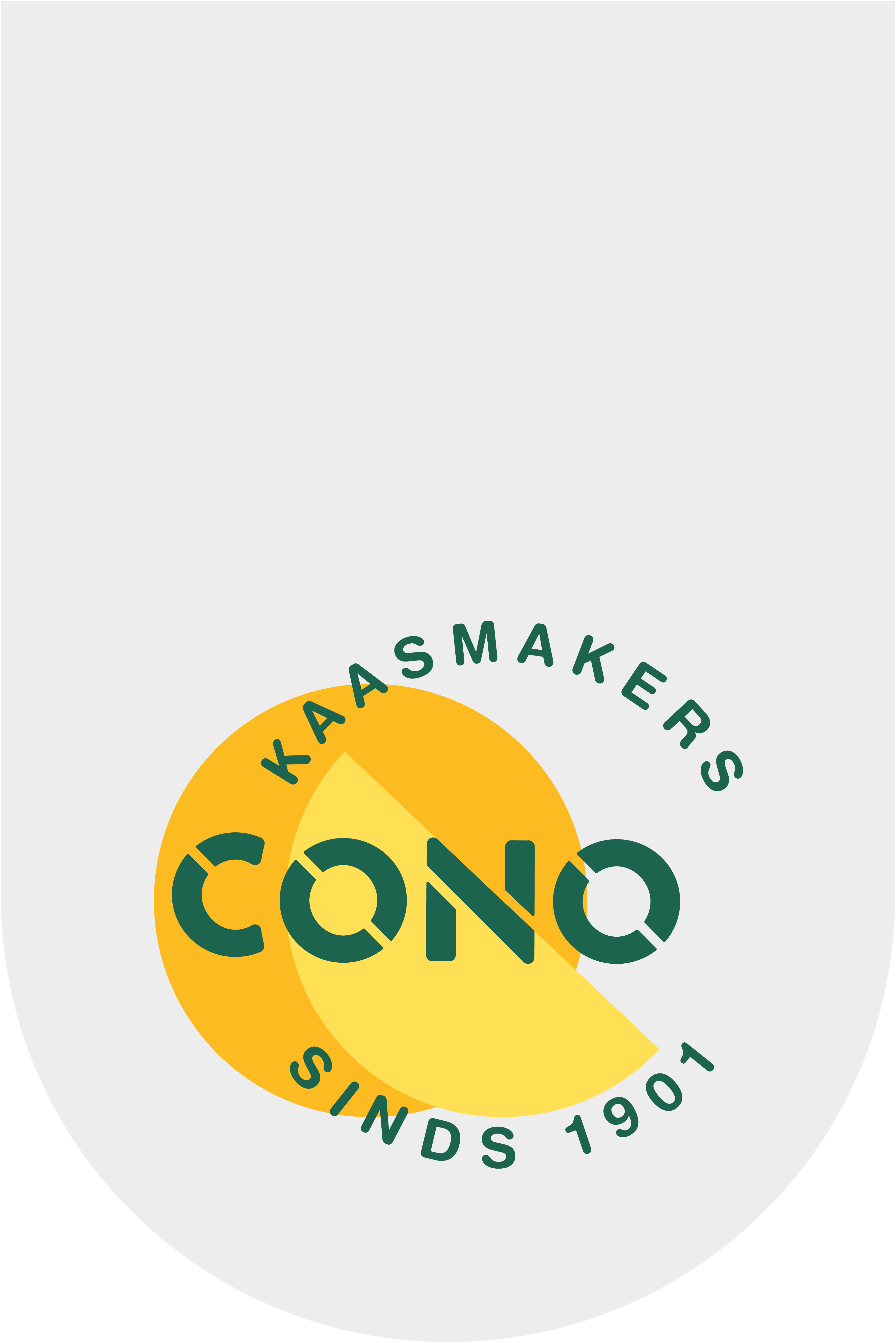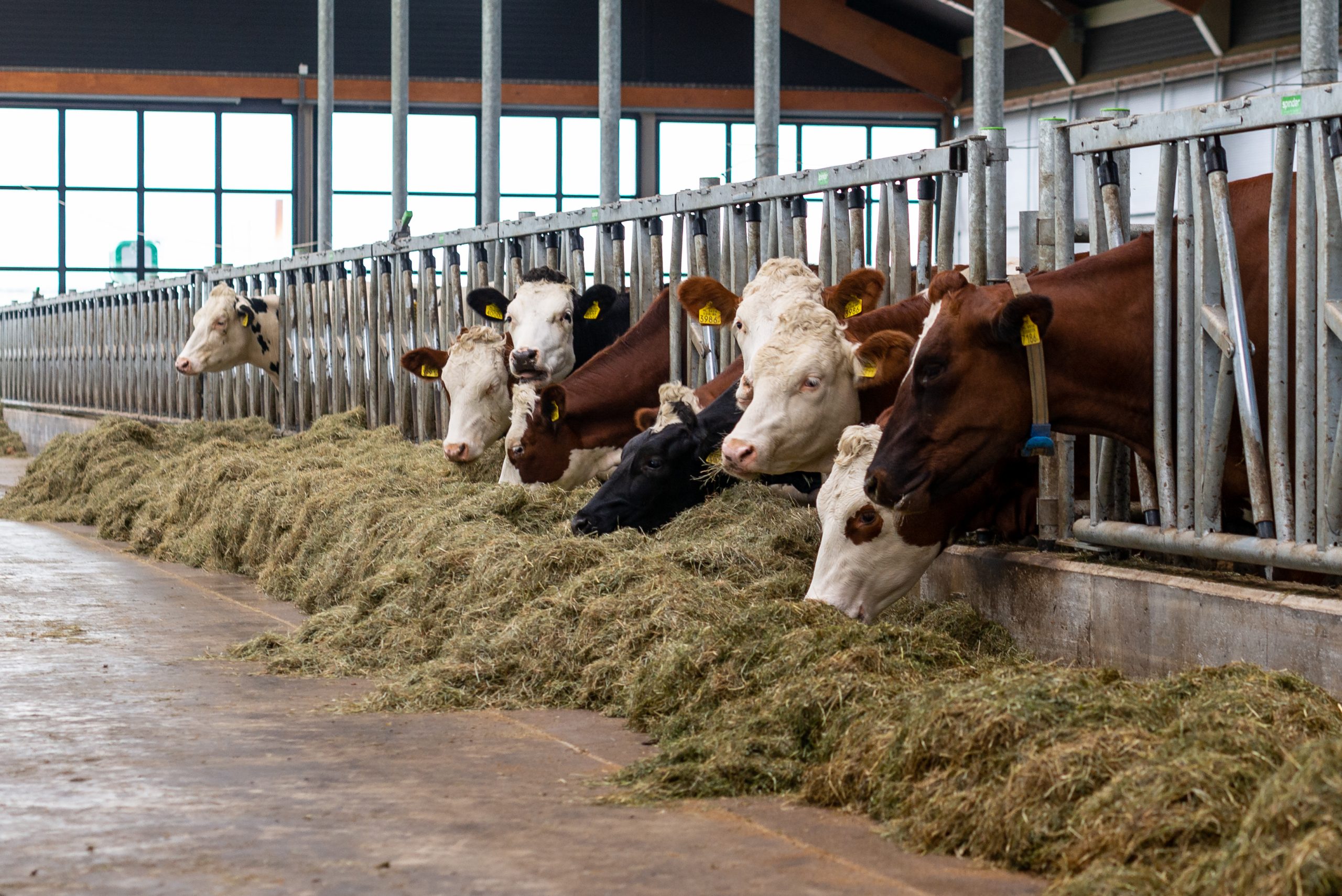CONO has animal welfare very high on its agenda. Happy cows is what we call that. The cows have plenty of room in the pasture and in the stable, where soft beds and cow brushes are available. Cows that live longer in good health are sustainable in many ways: good animal welfare speaks for itself but an older cow is also better for the climate and increases the dairy farmer's job satisfaction. After all, the animals are the future of the dairy farm.

In the meadow
At least 720 hours per year cows are allowed, no: must graze outside in the pasture to meet the standard of the Foundation Weidegang. At CONO we go further than that. The cows of our dairy farmers graze outdoors for an average of 176 days a year, more than 10 hours a day*. The calves and heifers also graze in the pasture, because young is old. Cows that graze in the pasture show more natural behavior, are more "comfortable in their skin" and are therefore healthier.
Remarkably, some farmers have equipped their cows with a smart tracking system. This allows them to monitor the health of their cows even when they are outside. For example, via a pedometer: a cow that walks less than usual may need to be watched a little more.
*grazing result 2023
In the stable
Most cows spend an average of four months a year in the barn. That is why we pay a lot of attention to housing aspects such as claw care, lying comfort and stall occupancy. Logical aspects when you consider that a dairy cow lies down and ruminates 12 to 13 hours a day. Of course, clean drinking water is available throughout the day.

Cow brushes
Practical experience shows that cows like to be brushed. It is relaxing and a great contribution to good coat care. Therefore we want all cows in the barn to have access to a cow brush. Nothing less than a (fully automatic) massage for the back, flanks and head. Cows are often very motivated to be brushed. This sometimes even causes traffic jams in the barn.
Soft lying areas
At least as many as there are cows, so that one does not have to wait for the other to lie down comfortably. And the surface must be really soft, for example ground straw, a thick layer of sawdust, a rubber mat or waterbed.
KoeKompas
The welfare of the cows and calves is recorded by the farmer and his veterinarian in the KoeKompas. A measuring instrument that was developed at CONO. In this way, the farmer can keep track of his own performance and see how he scores in relation to the CONO average, and can improve where necessary. If a veterinarian sees points for improvement, he or she will point them out and advise the dairy farmer on how to do this for the health and welfare of the cow or calf.
As CONO, we have insight into the KoeKompasses that our dairy farmers draw up and submit to their veterinarian. In addition to the advice from the veterinarian, we can also discuss points of improvement with the farmer.
Controls and Assurance
Of course we participate in the national programs for optimal animal health. For example, external institutions check through blood tests and tank milk that cows are free of IBR (cow flu) and BVD (a resistance-reducing infectious disease). Within the Sustainable Dairy Chain, Dutch dairy farmers and
and dairy companies are working together towards more sustainable business operations. This means that extra steps are also being taken in the field of animal welfare and animal health.
There is also the KoeMonitor, an initiative of interest groups of dairy companies (NZO), dairy farmers (LTO, NMV) together with veterinarians (KNMvD, CPD). This program combines visits by a veterinarian (KoeKompas) and the health data of the herd (KoeData) with even better knowledge of the farmer to recognize sick animals (KoeAlert).
Checks on animal welfare and animal health requirements are carried out by an independent inspection body (Qlip).

